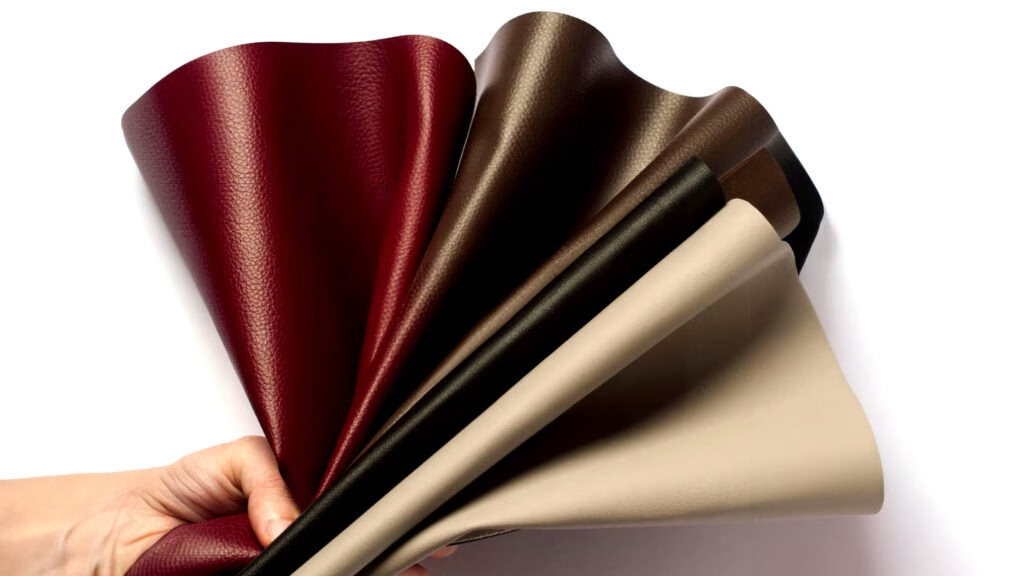Why Are Automakers Suddenly Obsessed with Plant-Based Leather?
If you’ve shopped for a new car lately, you’ve probably noticed a parade of fancy-sounding upholstery names—SofTex, SensaTec, Nuluxe, MB-Tex. What’s the deal? The auto industry is in the middle of a quiet revolution, swapping out traditional leather for high-tech alternatives. And now, Hyundai is betting big on a new contender: plant-based leather developed with the startup Uncaged Innovations.
What Makes This Plant-Based Leather Different from the Usual Faux Options?
Most faux leathers on the market are made from plastics—think PVC or polyurethane. Sure, they look convincing, but they’re still derived from fossil fuels and don’t always feel right. Uncaged’s material flips the script. It’s crafted mainly from wheat, soy, and corn proteins, designed to mimic the fibrous structure of real animal hides. The result? A material that doesn’t just look like leather—it feels and even smells like it.
That’s not just marketing fluff. Early testers say the difference is striking. And it’s not just Hyundai taking notice; luxury brands like Jaguar Land Rover are reportedly interested in this next-gen upholstery.
How Big Is the Environmental Impact of Switching to Plant-Based Leather?
Let’s talk numbers. According to Uncaged, their plant-based leather slashes carbon emissions by up to 95% compared to traditional animal leather. That’s a staggering figure, especially when you consider that livestock agriculture is responsible for nearly 15% of global greenhouse gas emissions, with leather production being a significant contributor (source: FAO, 2023).
But it’s not just about emissions. Traditional leather manufacturing is notoriously wasteful—each car interior can require two to fourteen cowhides, and imperfections like scars or bug bites mean much of the hide gets tossed. In contrast, Uncaged’s product is made in consistent sheets, minimizing waste and making the process far more efficient.
Will Plant-Based Leather Hold Up in the Real World?
Durability is the million-dollar question. Car interiors take a beating—sun, heat, spilled coffee, you name it. Uncaged is working with Hyundai’s innovation arm to make sure their material can handle the abuse. One automaker asked for the material to withstand 95°C (203°F) for 500 hours. Uncaged’s first tests hit 85°C for 500 hours and passed, which is already impressive for a new material.
There’s another twist: customization. Automakers are asking Uncaged to create signature scents for their interiors. Imagine stepping into a car and being greeted by a bespoke aroma—no more generic “new car smell.” It’s a small detail, but it shows how seriously brands are taking this shift.
How Does Cost Stack Up Against Traditional Leather?
Here’s where things get interesting for both automakers and buyers. Genuine leather is expensive—not just because of the raw material, but also the labor and waste involved. Uncaged’s plant-based leather, on the other hand, can be produced for less than $10 per square foot in small orders. As production scales, costs are expected to drop further.
For automakers, that means a chance to offer premium-feeling interiors at a lower price point, or to reinvest those savings elsewhere—think better tech, more safety features, or simply a more affordable car.
Are There Any Downsides or Challenges Left to Solve?
No innovation is perfect out of the gate. The biggest hurdle right now is heat resistance—making sure the material doesn’t warp, crack, or degrade in harsh conditions. But the progress so far is promising, and with major brands pushing for rapid development, it’s likely only a matter of time before these plant-based leathers become mainstream.
There’s also the question of consumer perception. Some buyers still equate “real” leather with luxury. But as sustainability becomes a bigger selling point—and as these new materials get closer to the look, feel, and even smell of the real thing—that mindset is shifting fast.
What’s Next for Plant-Based Leather in Cars?
With Hyundai leading the charge and other automakers watching closely, plant-based leather is poised to become a staple in the next generation of vehicles. The technology is advancing quickly, and the benefits are hard to ignore: lower emissions, less waste, customizable features, and potentially lower costs.
The big takeaway? Reinventing car interiors isn’t about perfection—it’s about smarter adjustments. Start with one change this week, and you’ll likely spot the difference by month’s end. The future of automotive luxury might just be growing in a field, not grazing in a pasture.

